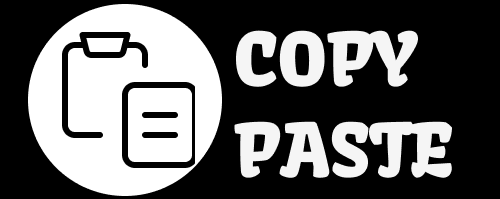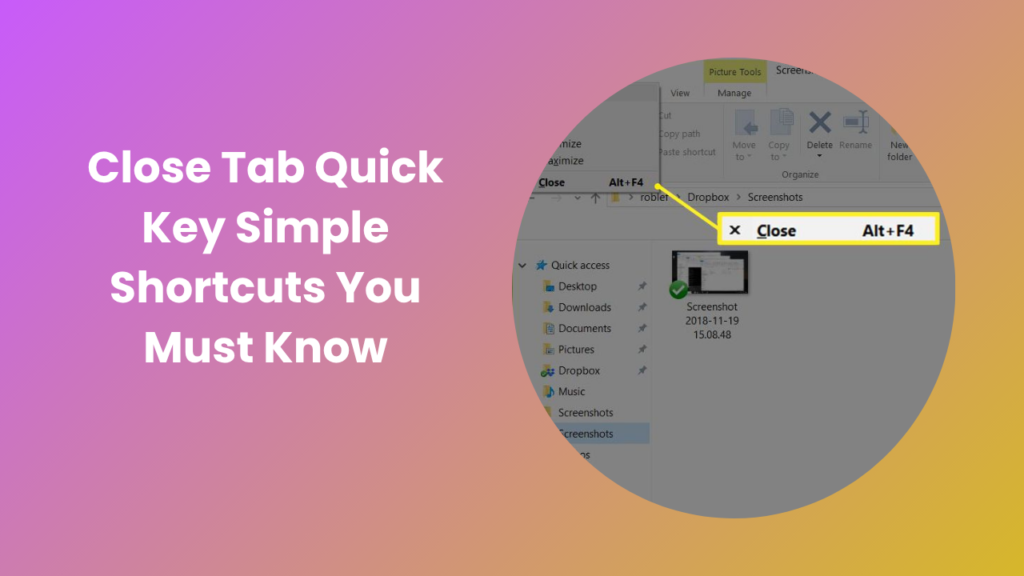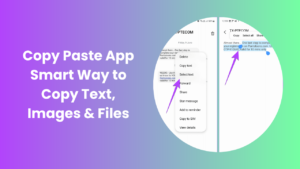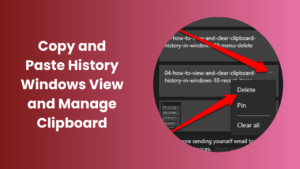In the fast-paced world of digital browsing, managing multiple open tabs efficiently can make a significant difference in productivity. Every internet user, whether working, studying, or casually browsing, faces the challenge of keeping numerous tabs organized without wasting time. The close tab quick key is one of the simplest yet most powerful tools to streamline this process. By using this keyboard shortcut, you can instantly close the active tab without relying on a mouse, saving both time and effort. Incorporating this shortcut into your daily browsing routine can help you maintain a clean workspace, reduce distractions, and improve overall digital efficiency, allowing you to focus on the tasks that truly matter.
Understanding the Role of Keyboard Shortcuts in Browsing
Browser shortcuts are essential tools for anyone seeking a faster and more organized online experience. These shortcuts help users navigate, manage and interact with multiple open tabs efficiently, without constantly moving the mouse. Keyboard shortcuts reduce interruptions, allowing for seamless transitions between tasks and improving overall productivity. The close tabs quick key is a prime example of such a shortcut. It enables users to remove unwanted tabs instantly, helping maintain focus and organization. Understanding the value of shortcuts in modern web navigation is crucial for users who spend extended hours online. By mastering them, browsing becomes smoother, faster, and more intuitive, creating a more enjoyable and productive digital workflow.
How the Close Tab Quick Key Functions
The close tabs quick key operates through a simple key combination, typically Ctrl + W on Windows or Command + W on Mac devices. When pressed, it immediately closes the active tab, eliminating the need to search for the small “X” button at the top of the browser window. This functionality works across nearly all major browsers, making it a reliable tool for daily browsing. In addition to its simplicity, this shortcut is safe to use, as most browsers warn users if they attempt to close a tab containing unsaved data, such as forms or unfinished documents. Understanding how this quick key works ensures that users can close tabs efficiently while avoiding accidental data loss, thereby maintaining a smooth and productive browsing experience.
Tips for Managing Multiple Browser Tabs Efficiently
Managing a large number of browser tabs can be challenging without a proper strategy. One effective method is to regularly review your open tabs and close those that are no longer needed. Grouping related tabs together or using tab management features such as pinned tabs can help create a more organized workspace. Additionally, taking advantage of bookmarks to save pages for later reference can reduce clutter while keeping important information easily accessible. By implementing these habits, users can maintain focus, reduce distractions, and improve their overall browsing efficiency without feeling overwhelmed.
Benefits of Keyboard Shortcuts Beyond Browsing
Keyboard shortcuts do more than just save time; they enhance overall computer navigation and efficiency. Using shortcuts reduces repetitive mouse movements, which can decrease strain on the hands and wrists during extended computer sessions. They also allow users to switch between tasks quickly and maintain focus without interrupting workflow. When mastered, shortcuts can make everyday computing smoother, enabling faster access to tools, applications, and features across the operating system. Adopting these techniques fosters a more productive and comfortable digital environment for both work and leisure activities.
How to Customize Your Browser for a Smoother Experience
Customizing browser settings can significantly improve user experience and browsing speed. Adjusting features such as the homepage, default search engine, and privacy settings ensures that the browser functions according to individual preferences. Extensions and add-ons can further enhance productivity by providing additional functionalities, from managing tabs to blocking distractions. Understanding and utilizing these customization options allows users to create a tailored browsing environment that supports their workflow efficiently and intuitively. Regularly reviewing and updating these settings helps maintain an optimized and smooth online experience over time.
Enhancing Productivity Through Efficient Tab Management
Using the close tabs quick key can transform how you manage your browsing sessions, significantly boosting productivity. Open tabs often serve as digital distractions, consuming mental energy and reducing focus on essential tasks. By closing unnecessary tabs quickly, users can create a cleaner digital workspace that promotes concentration and efficiency. Integrating this shortcut into a broader tab management strategy allows users to focus on high-priority tasks without interruption. Moreover, combining this key with other navigation shortcuts, such as switching between tabs or reopening recently closed ones, further enhances workflow efficiency. Over time, adopting these practices not only saves time but also reduces the mental clutter associated with multitasking online.
Complementary Shortcuts for Seamless Browsing
While the close tabs quick key is invaluable, other shortcuts can further streamline your online experience. For instance, reopening a recently closed tab ensures that accidentally closed pages do not disrupt workflow. Switching quickly between multiple tabs without relying on the mouse allows for uninterrupted research or project management. By understanding how different keyboard combinations interact, users can create a personalized system that suits their browsing habits. The key is to combine these shortcuts thoughtfully, ensuring that all functions work together to reduce friction and enhance digital efficiency. When mastered, these complementary shortcuts offer a seamless, highly productive browsing experience that keeps users in control of their workflow at all times.
Avoiding Common Mistakes When Using Shortcuts
Even experienced users can make errors when relying on keyboard shortcuts. Accidentally closing tabs containing important information is a common issue, which can interrupt workflow and cause unnecessary stress. Users should always ensure that critical content is saved before using the close tabs quick key. Another common mistake is assuming that all browsers behave identically. Minor differences in shortcut behavior may occur due to browser updates or extensions, potentially leading to unexpected results. By understanding these nuances and using shortcuts mindfully, users can prevent mistakes and make the most of the time-saving benefits these tools offer. Careful attention to detail ensures that shortcuts become a reliable part of the browsing workflow.
Tips for Better Tab Management Without Lists
Effective tab management requires more than just knowing shortcuts; it involves thoughtful organization and planning. Periodically reviewing open tabs and closing unnecessary ones helps maintain a clean workspace. Grouping related tabs and utilizing browser features like pinned tabs or bookmarks can also improve efficiency. Combining these organizational strategies with the close the tab quick key allows users to maintain focus, reduce stress, and work more effectively. Over time, these habits foster a productive online environment, ensuring that digital browsing supports rather than hinders workflow. Maintaining a balance between convenience and structure is key to maximizing the benefits of tab management tools.
FAQs
What is the close tabs quick key?
The close tabs quick key is a keyboard shortcut that allows users to instantly close the active browser tab, saving time and avoiding the need to click the mouse.
How do I use the close tabs quick key on Windows?
On Windows, simply press Ctrl + W while in the active tab, and it will close immediately without affecting other open tabs.
How do I use the close tabs quick key on Mac?
On Mac devices, press Command + W to close the current tab instantly, providing the same efficiency as Windows shortcuts.
Can I reopen a tab I accidentally closed?
Yes, pressing Ctrl + Shift + T on Windows or Command + Shift + T on Mac will reopen the most recently closed tab quickly.
Does the shortcut work in all browsers?
Most modern browsers, including Chrome, Firefox, Edge, Safari, and Vivaldi, support this shortcut, making it a reliable and universal tool.
Can I customize the close tabs quick key?
Some browsers allow customization of keyboard shortcuts, letting users assign a different key combination if needed for personal preference.
Why is using keyboard shortcuts like this helpful?
Keyboard shortcuts reduce mouse usage, save time, and improve workflow efficiency, especially when managing multiple tabs during research or work.
Conclusion
Mastering the close tab quick key is a simple yet powerful way to improve browser efficiency and productivity. By integrating this shortcut into your daily routine, you can close unwanted tabs instantly, reduce distractions, and maintain a more organized digital workspace. Combining it with other tab management strategies and navigation shortcuts further enhances online workflows, allowing users to focus on meaningful tasks without interruptions. Whether you are a professional, student, or casual internet user, learning this keystroke can save time, reduce stress, and create a smoother, more controlled browsing experience, ensuring that your digital environment is both efficient and enjoyable.





